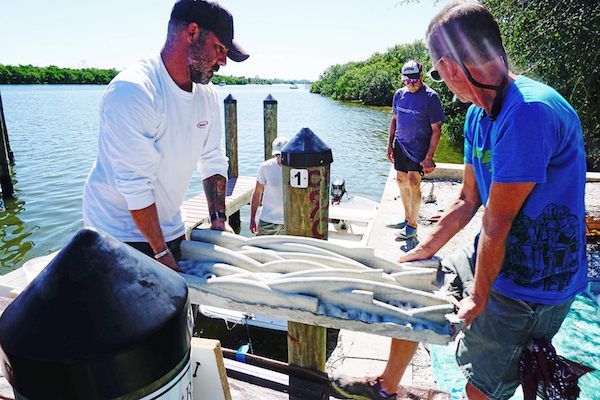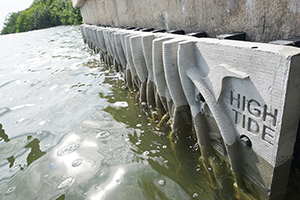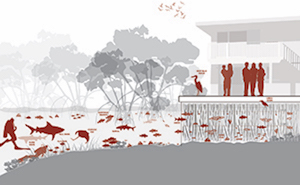Plan to foster sea life gets to root of problem

LAWRENCE -- Can a university professor from the middle of the country help restore some of the coastal habitat Florida is losing to human commercial development?
That’s the idea behind the “Reef Wall” experiment that University of Kansas School of Architecture, Design & Planning Assistant Professor Keith Van De Riet is undertaking at Weston’s WannaB Inn in Englewood, Florida.
 Van de Riet became interested in the possibility of replicating at least some of the environmentally beneficial effects of seaside mangrove forests while teaching at Florida Atlantic University. He continued that work after joining the KU faculty in 2015.
Van de Riet became interested in the possibility of replicating at least some of the environmentally beneficial effects of seaside mangrove forests while teaching at Florida Atlantic University. He continued that work after joining the KU faculty in 2015.
The idea, Van de Riet said, is to “mitigate the impact of development” by “creating life” along concrete seawalls that — mainly during the 20th century — replaced mangrove forests. Mangroves have any number of beneficial effects, from preventing shoreline erosion and filtering runoff to serving as the basis for a food chain topped by fish, birds and humans. And yet one-third of the world’s mangrove forests have been lost to human development, Van de Riet said.
His idea is to mimic the shape of mangrove roots — including the nooks and crannies fish like to swim within — in concrete panels that can be attached to otherwise blank seawalls or cast directly into new seawalls. The process started with digital 3-D modeling of actual plants, translating that geometry into rubber molds, and finally casting panels using high-strength concrete with crushed oyster shell as aggregate. The hope is that the oyster-shell mixture will help attract sea life.
 The experiment is funded by a grant from The Curtis and Edith Munson Foundation.
The experiment is funded by a grant from The Curtis and Edith Munson Foundation.
Van de Riet and helpers installed a 20-foot-long section of panels on a seawall at the WannaB Inn during an October visit that was nearly skunked by Hurricane Matthew and a red-tide event. The 80-room resort on Manasota Key, a barrier island in the Gulf of Mexico, prides itself on its retro style and oceanside fauna. The inn gave Van de Riet money matching his grant funds to complete his experiment.
With the help of FAU doctoral student Jessene Aquino-Thomas in Florida, Van de Riet plans to monitor the hoped-for advent of creatures like oysters, crabs and fish on and around the panels. After just a couple of weeks in the water, there are already hopeful signs. If the experiment is successful, Van de Riet said, he can imagine commercializing the Reef Wall system on a large scale (he’s working to patent the design) or perhaps seeing them become integral to permitting when seawalls are installed or renovated.
Van de Riet said current regulations “are generally about the mitigation of human activities, that is, limiting impact. We need to think about the possibility for regeneration.”
“If we want to eat fish, if we want clean water, we need to get to the root of the problem.”